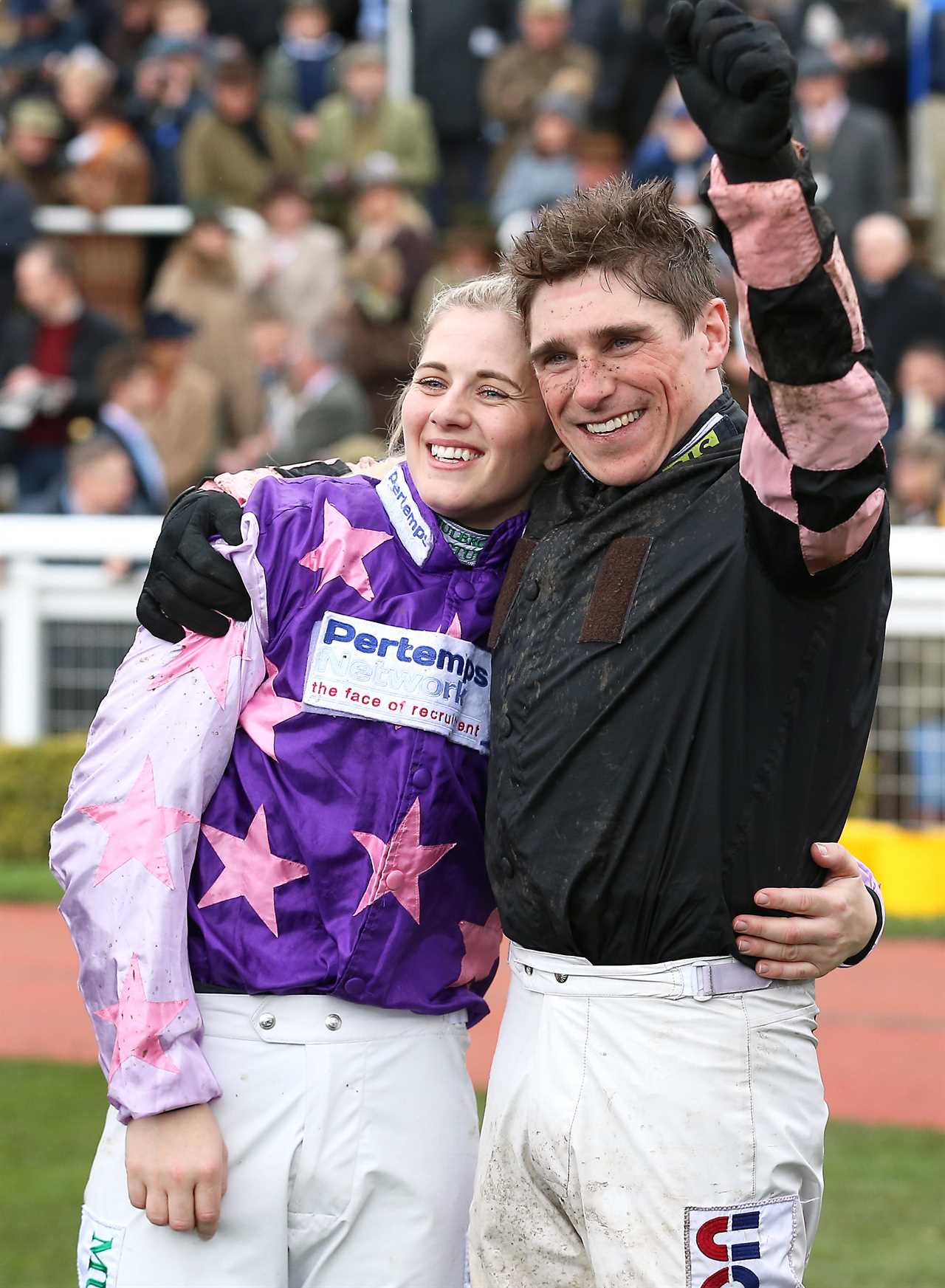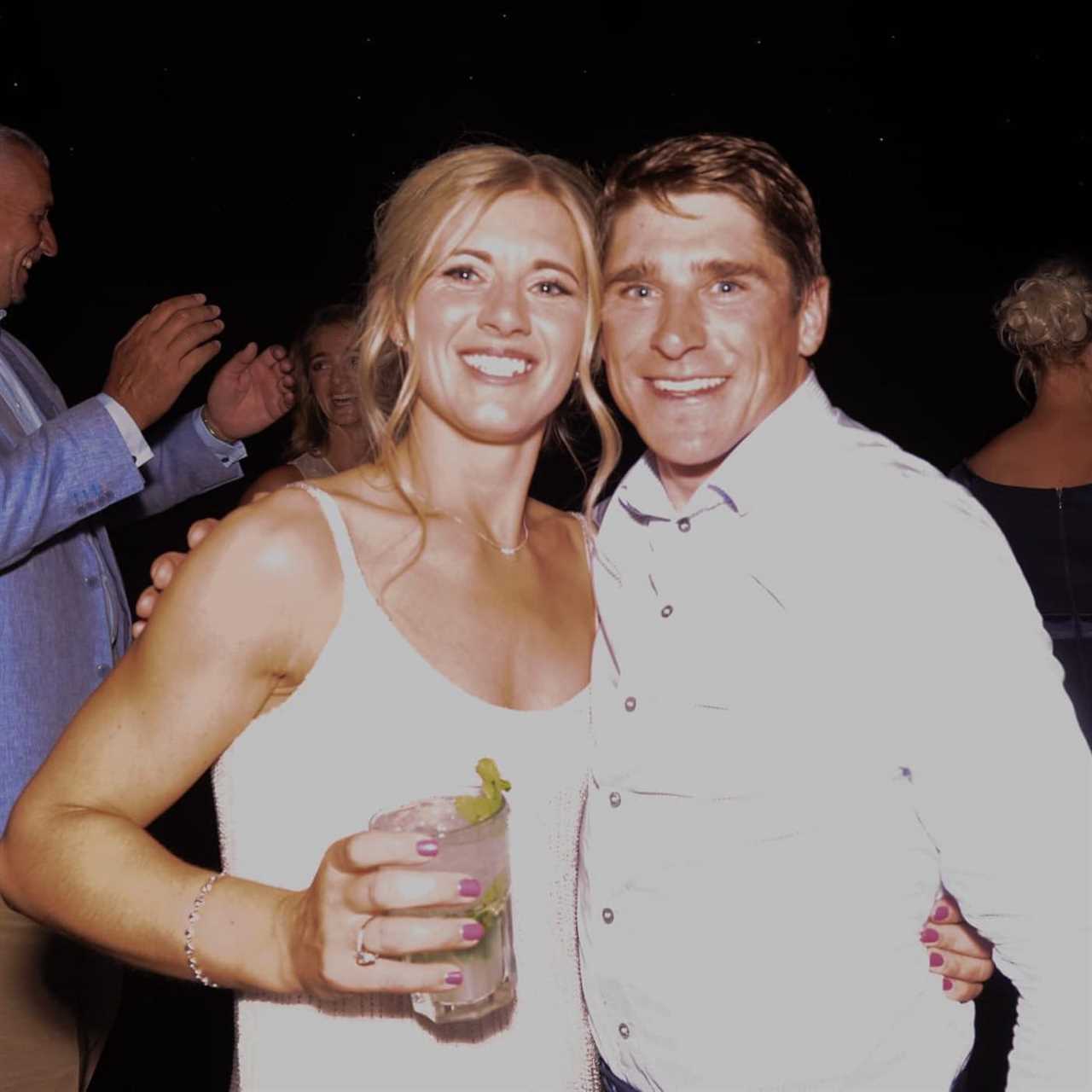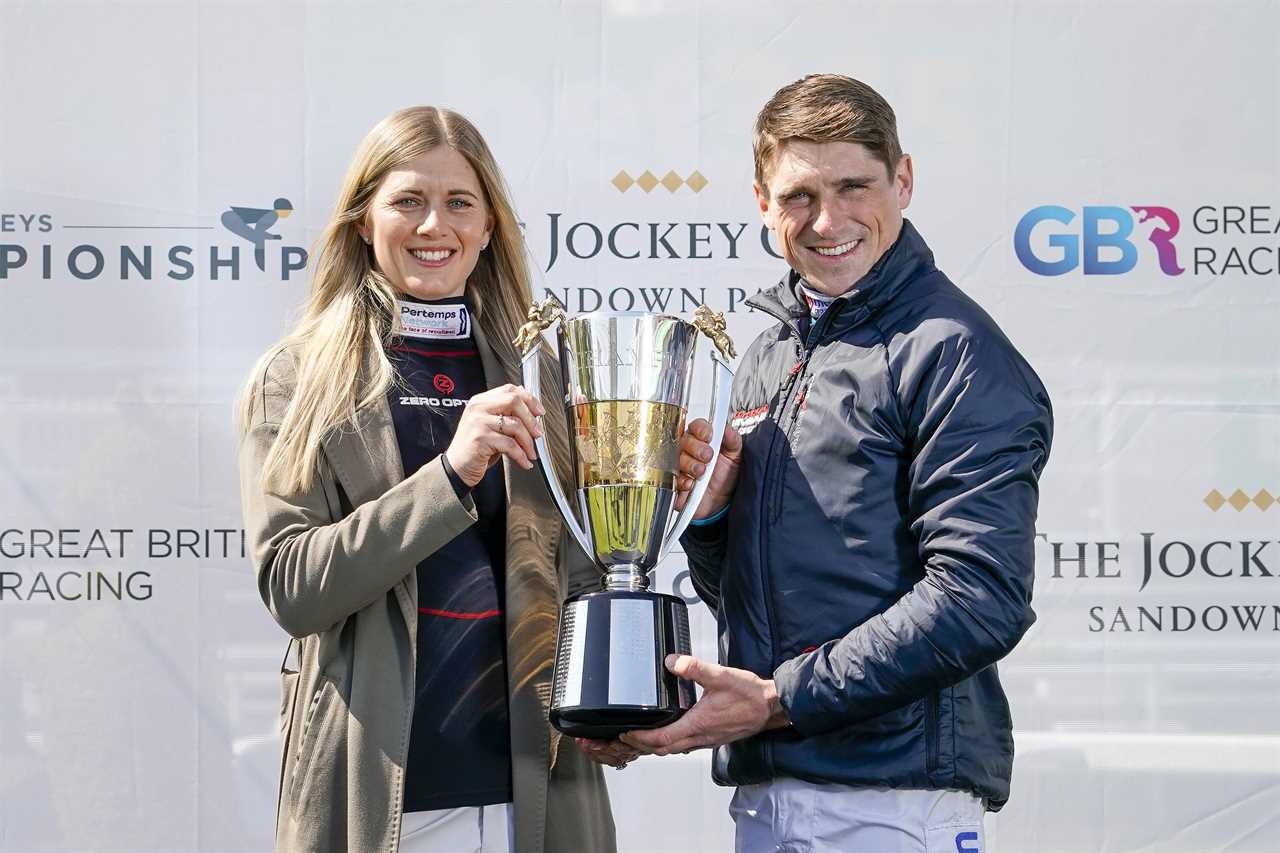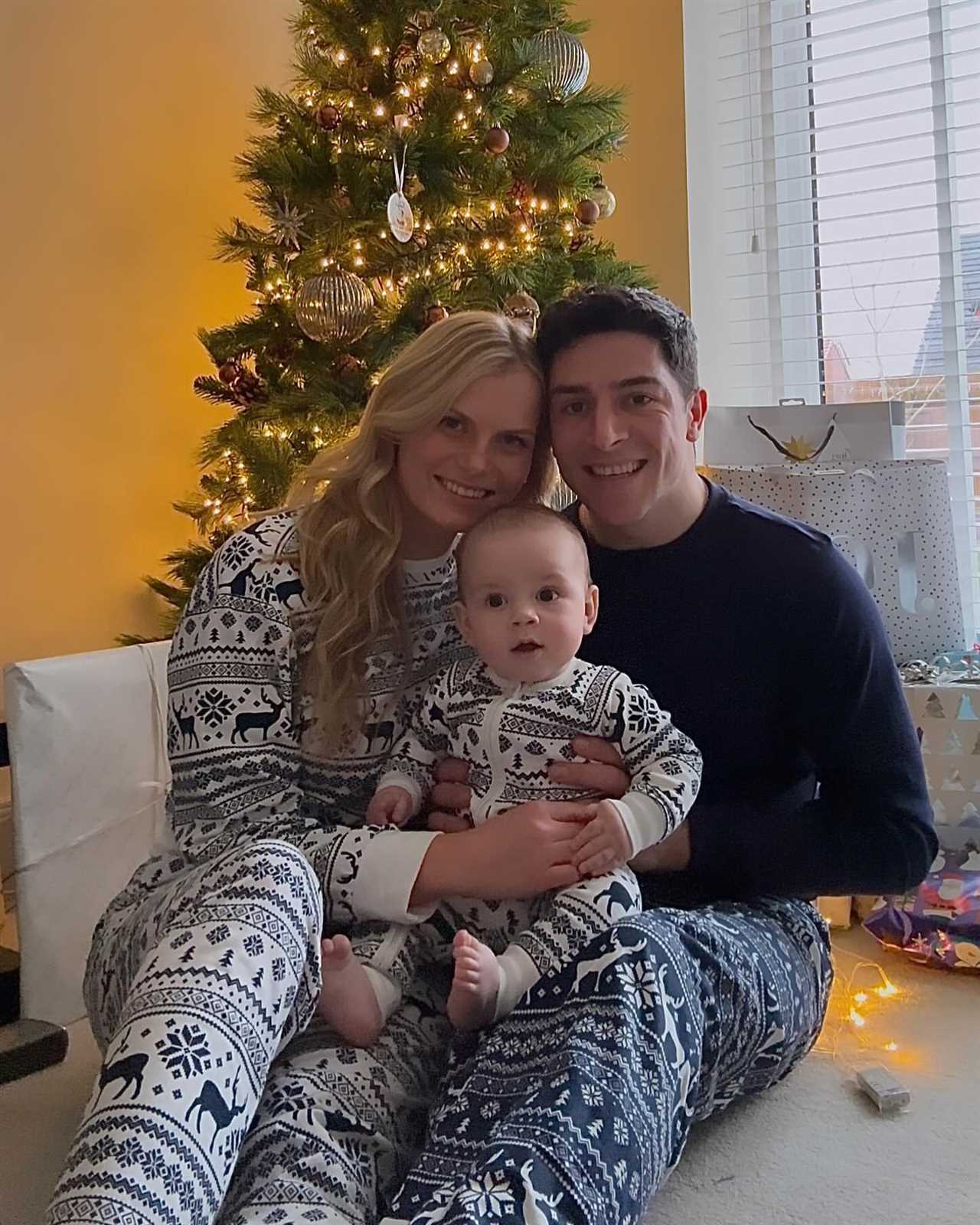
I've spent wayyy too many hours obsessing over the upcoming Grand National. Not because I'm some gambling genius (I lost £50 last year on a horse that practically walked the course), but because the drama behind the scenes is just... chef's kiss.
Let me tell you about the WAGs. God, I hate that term, but what else do you call them? These women aren't just arm candy - they're often professional riders themselves, juggling babies, careers, and relationships with men who literally risk their necks for a living.
When Your Husband Is Also Your Rival (Awkward Family Dinners, Anyone?)
Harry Skelton and Bridget Andrews are basically racing royalty at this point. They tied teh knot back in 2019, and here's the kicker - they sometimes race AGAINST each other. Can you imagine? "Pass the salt, honey. Oh, and sorry I beat you by three lengths today."
I actually witnessed Bridget's first Cheltenham win. The crowd went absolutely mental when she crossed the finish line ahead of Harry and celebrated with a victory kiss. Talk about mixed emotions!

Harry once told me (okay, he told a reporter and I read it) that they both just want to succeed in their careers. They've set up home in Warwickshire after meeting at his brother's stables - classic horse people romance. Last April, they welcomed baby Rory, which must make those post-race conversations even more interesting.
Harry's riding "Threeunderthrufive" this Saturday. Terrible name for a horse if you ask me, but nobody did.
The Secretive Couple That Makes Us All Curious
Listen. Some racing couples splash their relationship all over Instagram like it's 2016. Not Gavin Sheehan and Imy Levick.
These two keep things locked down tighter than the Crown Jewels. Imy's also a jockey (sensing a pattern here?), and they have a baby together, but beyond that? Crickets.

Gavin does occasionally post about their relationship - usually those annoyingly perfect family Christmas photos that make the rest of us feel inadequate. You know the ones... matching pajamas, perfect smiles, not a hair out of place. Meanwhile I'm still wearing the same sweatpants from 2018.
This will be Gavin's fourth crack at the big race. He's riding Hewick this year, which racing insiders are whispering could be a dark horse contender.
Why Do Jockeys Always Marry Other Jockeys?
Seriously though. It's like some unwritten rule in the racing world.
I asked my friend who works at Newmarket about this phenomenon. His response: "Who else would put up with their insane schedules and the fact they basically starve themselves professionally?" Fair point.

The lifestyle is brutal. Early mornings, constant travel, the pressure of performing, and the ever-present risk of injury. Having a partner who understands that world from the inside must be invaluable.
Plus they're all tiny people. Maybe they just look at regular-sized humans and think "nope."
The Real Cost of Being Racing Royalty
Behind the glamorous photos and winner's enclosure kisses, there's a reality most people don't see. These relationships face pressures most of us can't imagine.
When your partner might literally break their neck at work? That takes a special kind of strength.
I remember back in 2021 when I interviewed a retired jockey's wife (promised anonymity, sorry). She told me she kept a packed hospital bag by the door for three years straight. Just in case. Jesus.
So while we'll all be watching the horses this Saturday, spare a thought for the partners in the stands. They're the ones with their hearts in their throats for the entire 4 minutes and 30 seconds.
And I'll be the one who's lost another £50 on a horse with a stupid name.
Frequently Asked Questions
What are the necessary health precautions when training a racing horse?
To prevent injury or illness, racehorses need to be given the attention they deserve. Regular veterinary check-ups, vaccinations, dental care, and proper hoof management are essential. Equally important is monitoring the horse for signs of fatigue, strain, or discomfort. The risk of musculoskeletal damage can be minimized by implementing a progressive training regimen.
How do I prepare a horse to race?
A racehorse's conditioning is a process that involves a combination of slow, long distance work for stamina as well as shorter, faster workouts for speed. Over time, the horse's cardiovascular system and musculature must be strengthened through an exercise program that simulates racing without causing injuries or undue strain.
What are the different methods of race training for different horse breeds and types?
Race training methods can indeed vary for different horse breeds, as breed characteristics and racing distances differ. Thoroughbreds and Quarter Horses undergo different types of training. Thoroughbreds excel at long-distance flat races, while Quarter Horses excel in sprinting. Each breed requires a tailored approach to meet their physical and behavioral traits.
What is a horse's first step of training?
The initial phase of training a racehorse involves a critical stage known as "breaking," where the horse becomes accustomed to carrying a saddle, bridle, and the weight of a rider. During these early sessions, patience and gentle handling are paramount to ensure the horse learns to be comfortable with human interaction and the equipment it will wear throughout its racing career.
What age should a race horse start training?
Horses may begin their basic training as yearlings but they will usually begin more rigorous racing training and conditioning at around two years. This is when their bodies are mature enough to handle the stresses of the track while still being young and adaptable for the learning process. The exact timing can vary depending on each horse's temperament and development.
What is a trainer's role in training a racing horse?
The jockeys are essential in the training and development of racehorses. Not only do they ride the racehorses during workouts and give feedback, but they help educate the horse on racing tactics. A good jockey becomes attuned to the horse's strengths and weaknesses, which is indispensable for race preparation.
Statistics
- Approximately 70% of a racehorse's diet consists of forage, with the remainder made up of grains and supplements to meet their high-calorie needs.
- Racehorse mortality rates during racing have been observed to be between 1.5 to 2 deaths per thousand starts, depending on the racing jurisdiction.
- Statistically, less than 1% of thoroughbred foals born each year will go on to win a stakes race.
- The majority of racehorses in training are subject to an exercise regimen that includes being ridden six days a week.
- Around 80% of thoroughbred racehorses begin their racing careers by the age of two, according to industry estimates.
- The average racehorse reaches its peak physical ability between the ages of four to five, with some variation based on the breed and individual development.
External Links
How To
How to Improve a Racehorse’s Stamina & Speed
Interval training can increase a racehorse’s endurance and speed by alternating between high-speed gallop periods and slower recovery phases. Gradually increasing the distance of each workout as the horse gains fitness. The horse's recovery rate should be monitored to ensure that they aren't being overexercised. They also need to receive adequate rest in between sessions to help prevent fatigue and facilitate muscle recovery.
Did you miss our previous article...
https://sportingexcitement.com/horse-racing/aintree-showdown-why-im-backing-the-old-boy-against-jonbon-and-my-other-friday-picks
 CricketBoxingFormula 1GolfHorse RacingPremier LeagueTennisPrivacy PolicyTerms And Conditions
CricketBoxingFormula 1GolfHorse RacingPremier LeagueTennisPrivacy PolicyTerms And Conditions
